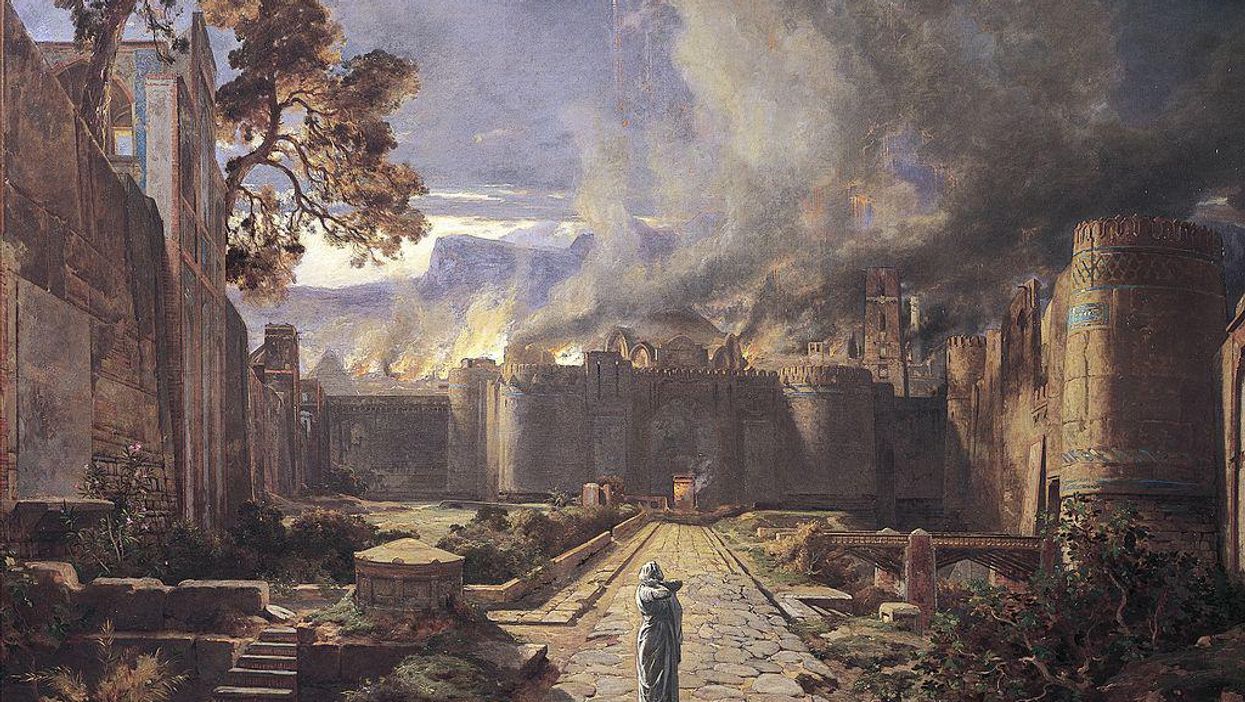
DeAgostini/Getty Images

A new scientific discovery in modern-day Tall el-Hammam is being touted as potential evidence of God's destruction of Sodom and Gomorrah as described in the Bible.
In a research paper published in Nature magazine this week, titled, "A Tunguska sized airburst destroyed Tall el-Hammam a Middle Bronze Age city in the Jordan Valley near the Dead Sea," scientists concluded after 15 years of intensive study that a gigantic asteroid destroyed an ancient Middle Eastern city roughly 3,600 years ago.
That ancient Middle Eastern city is widely considered to be Sodom, one half of an infamous pair of cities mentioned in the Bible's opening book, Genesis, that earned judgment from God for their exorbitant sinfulness.
Here's how researchers described the cataclysmic event in a much more accessible summary article published by the Conversation:
Flashing through the atmosphere, the rock exploded in a massive fireball about 2.5 miles (4 kilometers) above the ground. The blast was around 1,000 times more powerful than the Hiroshima atomic bomb. The shocked city dwellers who stared at it were blinded instantly. Air temperatures rapidly rose above 3,600 degrees Fahrenheit (2,000 degrees Celsius). Clothing and wood immediately burst into flames. Swords, spears, mudbricks and pottery began to melt. Almost immediately, the entire city was on fire.
Some seconds later, a massive shockwave smashed into the city. Moving at about 740 mph (1,200 kph), it was more powerful than the worst tornado ever recorded. The deadly winds ripped through the city, demolishing every building. They sheared off the top 40 feet (12 m) of the 4-story palace and blew the jumbled debris into the next valley. None of the 8,000 people or any animals within the city survived – their bodies were torn apart and their bones blasted into small fragments.
The findings are reportedly based on more than a decade of painstaking research conducted by a vast group of capable scientists — including "archaeologists, geologists, geochemists, geomorphologists, mineralogists, paleobotanists, sedimentologists, cosmic-impact experts, and medical doctors."
The group spent years sifting through archaeological excavations seeking to determine what kind of force was "capable of melting metal, mudbricks, and pottery."
It should be noted that the scientists did not set out to prove or disprove the biblical story. Rather, the comparison arose naturally as the findings evolved, and one can easily see why.
Compare their discovery to the historical record of the destruction of Sodom and Gomorrah, according to Genesis 19: 24-28 (New International Version):
Then the Lord rained down burning sulfur on Sodom and Gomorrah — from the Lord out of the heavens. Thus he overthrew those cities and the entire plain, destroying all those living in the cities — and also the vegetation in the land. But Lot's wife looked back, and she became a pillar of salt.
Early the next morning Abraham got up and returned to the place where he had stood before the Lord. He looked down toward Sodom and Gomorrah, toward all the land of the plain, and he saw dense smoke rising from the land, like smoke from a furnace.
It's interesting, to say the very least.
Of course, the researchers — even in acknowledging the hair-raising similarities — give the collation a typical secular academic treatment. The airburst, they say, likely served as folkloric inspiration for the later-recorded biblical story.
"It's possible that an oral description of the city's destruction may have been handed down for generations until it was recorded as the story of Biblical Sodom," the scientists wrote.
Others might well suspect that the biblical account was not a spiritualized retelling but an accurate description of the event.